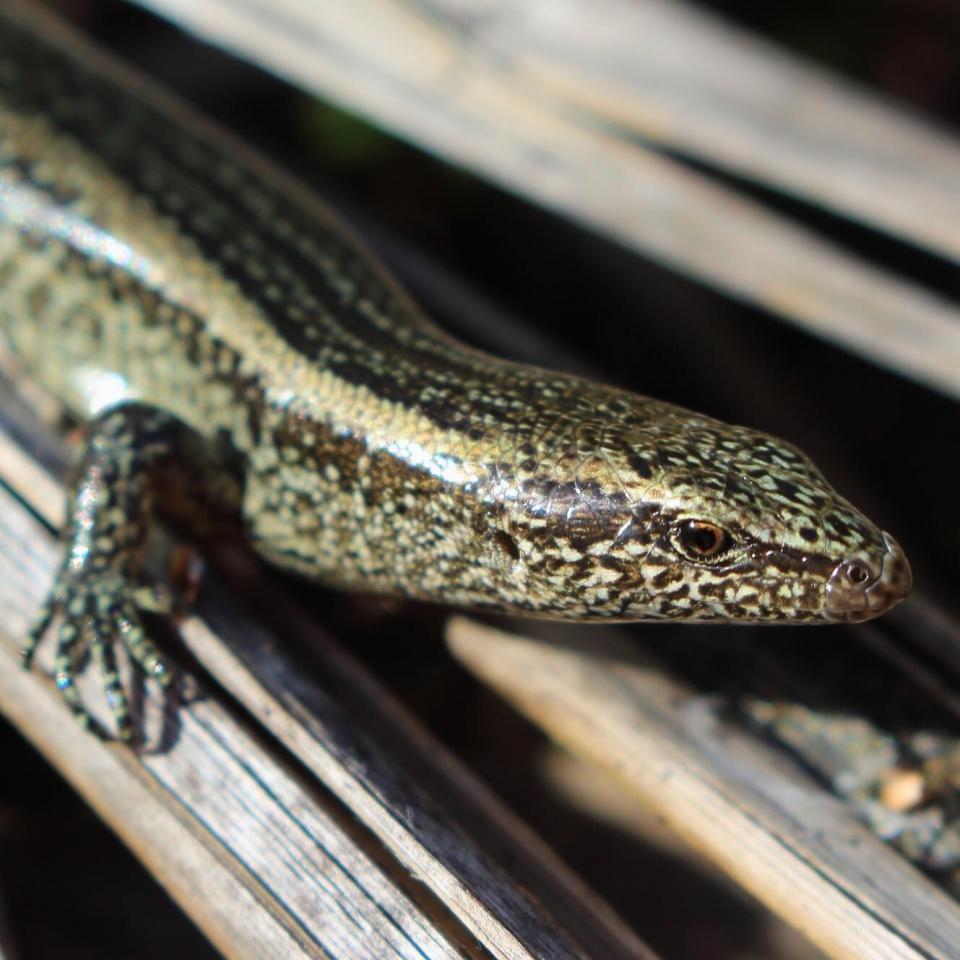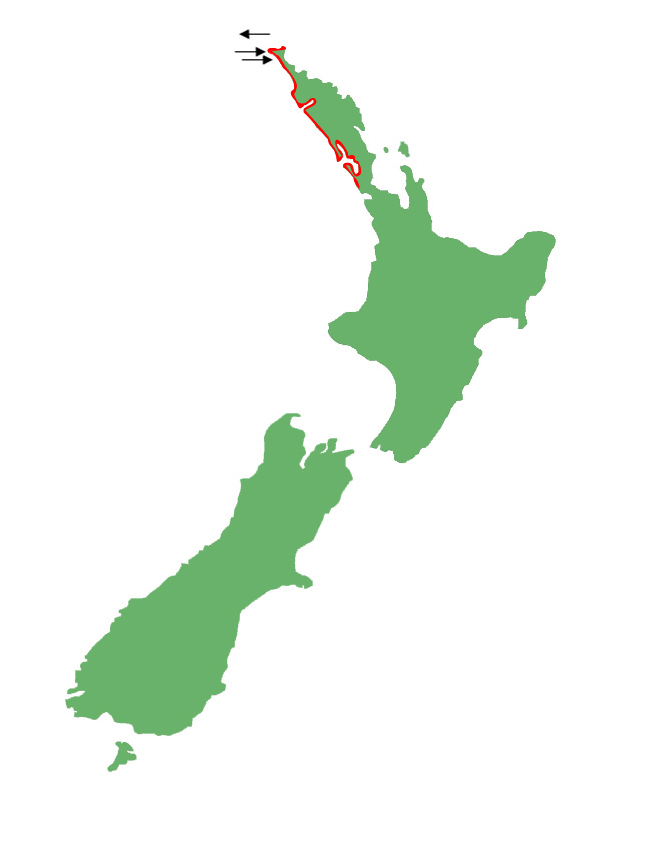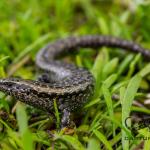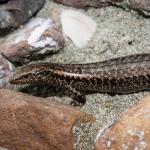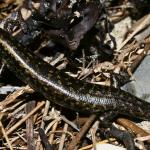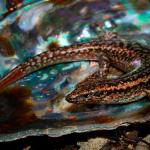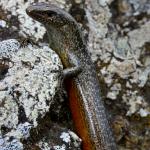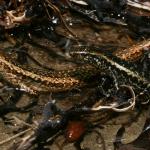- Home
- Herpetofauna Index
- Native
- Oligosoma "Three Kings, Te Paki, Western Northland"
Oligosoma "Three Kings, Te Paki, Western Northland"
Tātahi skink
Oligosoma "Three Kings, Te Paki, Western Northland"

Length: SVL up to 80mm, with the tail being longer than the body length
Weight: up to 10 grams
Description
A beautiful, and often intricately marked species that inhabits coastal habitats along the west coast of Auckland and Northland.
They are highly variable ranging in colouration from golden-brown through to black, with heavy golden, white, or black flecking. A pair of pale or golden-brown dorsolateral stripes extend from the base of the head to the tip of the tail but may break up or become indistinct partway down the body. The sides of the body are dominated by dark brown bands (often flecked with white or gold) that start at the nostrils and follow the lower edge of the dorsolateral stripes onto the tail. The lower portion of the sides are often heavily flecked with white, gold and brown. The undersides can be a uniform cream, grey, pink, orange or pale yellow with or without black speckling; the throat and chin are often cream or grey with black speckling.
Similar in appearance to the shore skink (Oligosoma smithi), but geographically isolated.
Life expectancy
Unknown, but likely similar to the Shore skink (Oligosoma smithi).
Distribution
Restricted to the west coast of the northern North Island from Muriwai Beach (Auckland) to North Cape (Aupōuri Peninsula). This species is also found on several islands in the region including Motuopao, and Manawatāwhi / Three Kings Islands.
Ecology and habitat
The Tātahi skink shares a similar niche to the shore skink (Oligosoma smithi) being terrestrial, conspicuous, and diurnal. It inhabits all coastal habitats along the west coast of the upper North Island including sand dune systems, boulder beaches, rock talus, rock platforms, scrubland, and rank pasture. As with other coastal skink species, the Tātahi skink has a high tolerance for salt.
Social structure
Largely unknown, but likely to be solitary.
Breeding biology
Largely unknown, but likely similar to the Shore skink (Oligosoma smithi) e.g. 4-6 young born annually in January to February.
Diet
The Tātahi skink is omnivorous in nature, feeding on small coastal invertebrates (amphipods, earwigs, beetles), and the small fruits from some coastal plant species. It is likely that Tātahi skink feed on carrion washed into coastal habitats (dead fish, and birds).
Disease
Largely Unknown.
Conservation strategy
Listed by DOC as "At Risk - Declining". There is no active management of this species, however, they would benefit from further protection of coastal habitat from human modification, and the impacts of pest plants and animals.
Interesting notes
This species was originally considered a unique clade of shore skinks (Oligosoma smithi), however, genetic studies in 2008 discovered that there was a deep historic separation between the east coast (shore skink) and west coast (tātahi skink) animals, resulting in Tātahi skinks being managed as a separate species.
Their common name comes from the Māori word 'tātahi' meaning beach, referencing their coastal habitat.
References
Hitchmough, R.A., Barr, B., Lettink, M., Monks, J., Reardon, J., Tocher, M., van Winkel, D., Rolfe, J. (2016). Conservation status of New Zealand reptiles, 2015; New Zealand threat classification series 17. Wellington: New Zealand Department of Conservation.
Jewell, T. (2011). A photographic guide to reptiles and amphibians of New Zealand. Auckland: New Holland Publishing.
McCallum, J. (1981). Reptiles of the North Cape region, New Zealand. Tane, 27, 152-157.
van Winkel, D., Baling, M. & Hitchmough, R. (2018). Reptiles and Amphibians of New Zealand: A field guide. Auckland: Auckland University Press, 376 pp.

